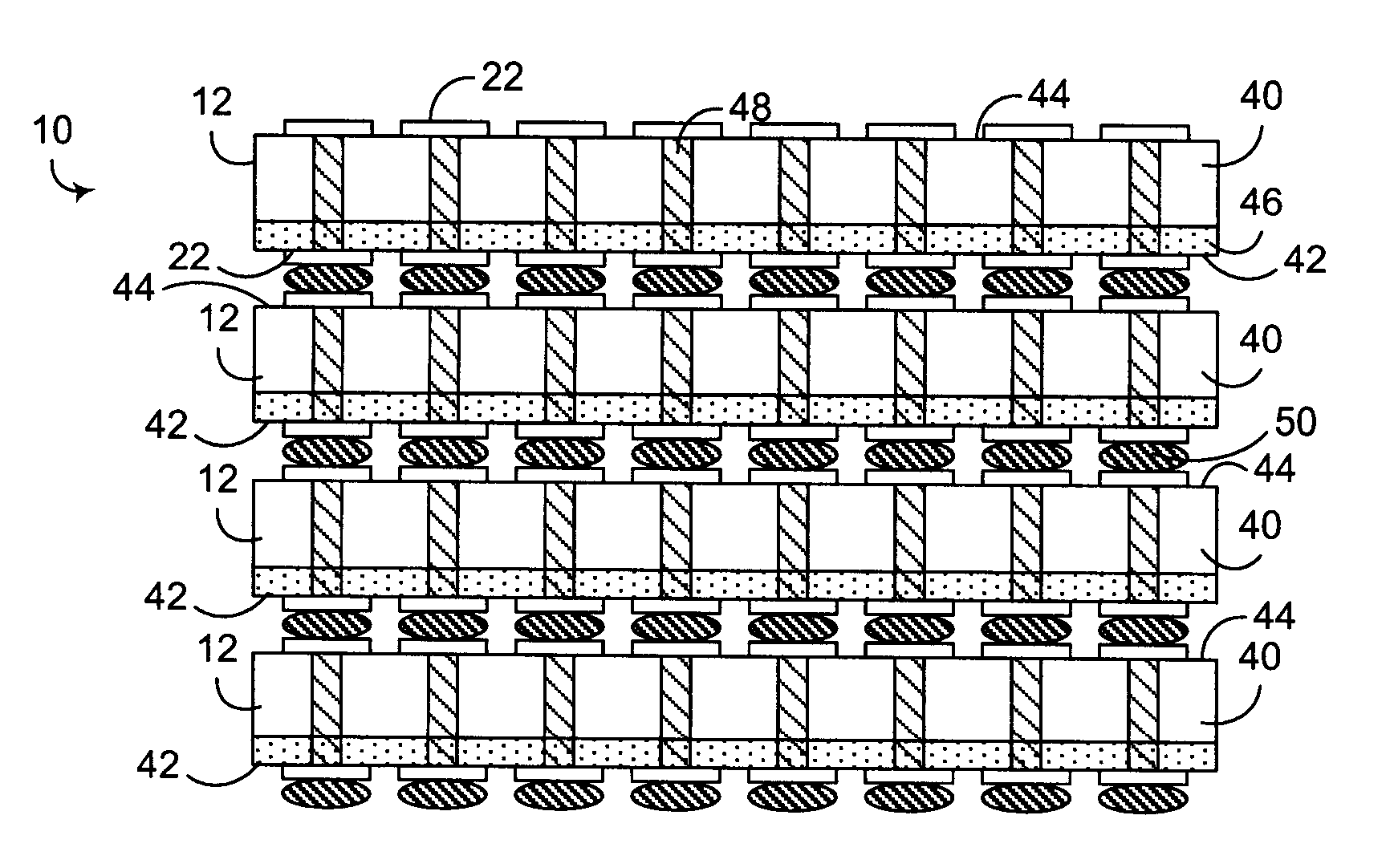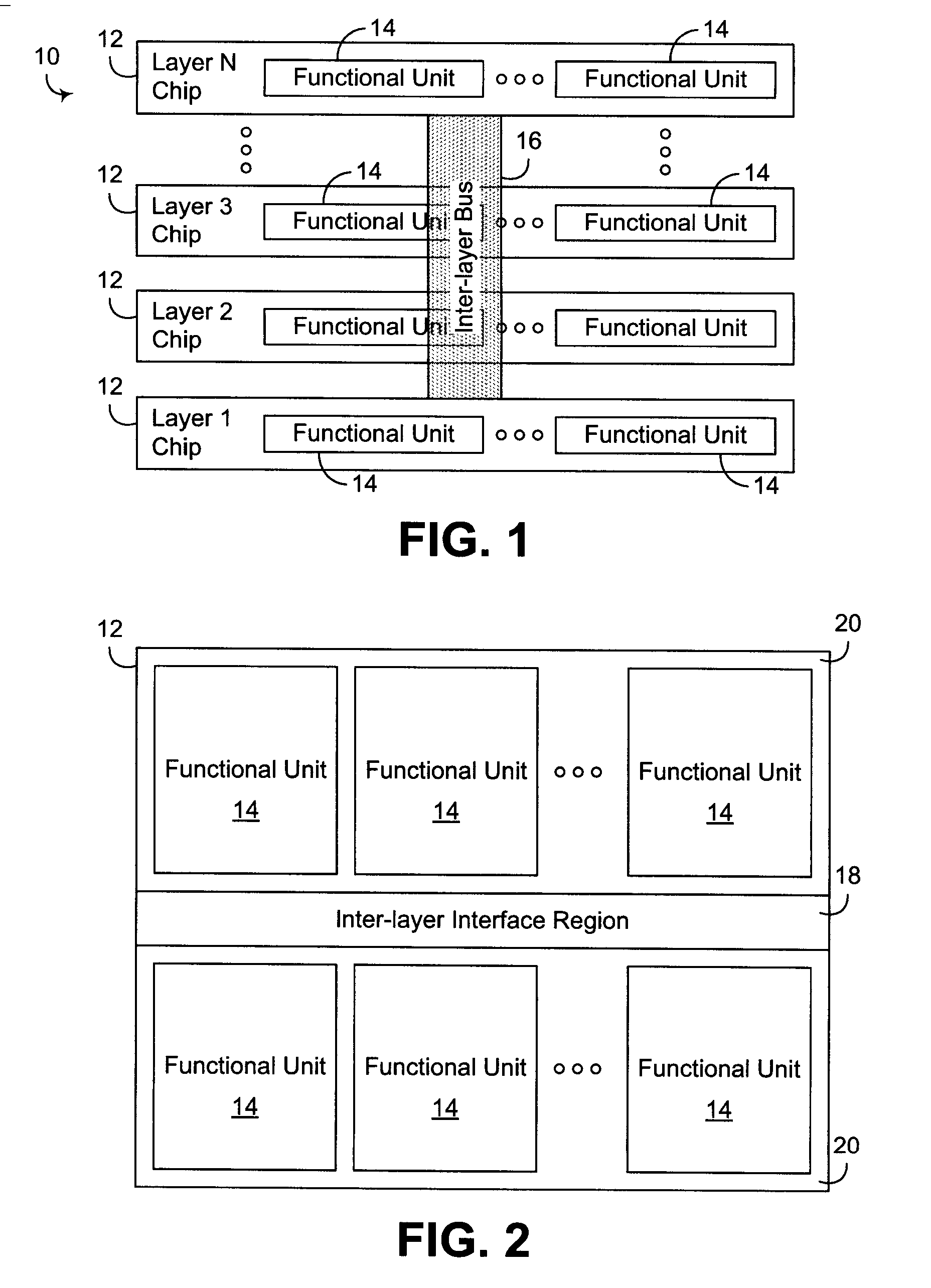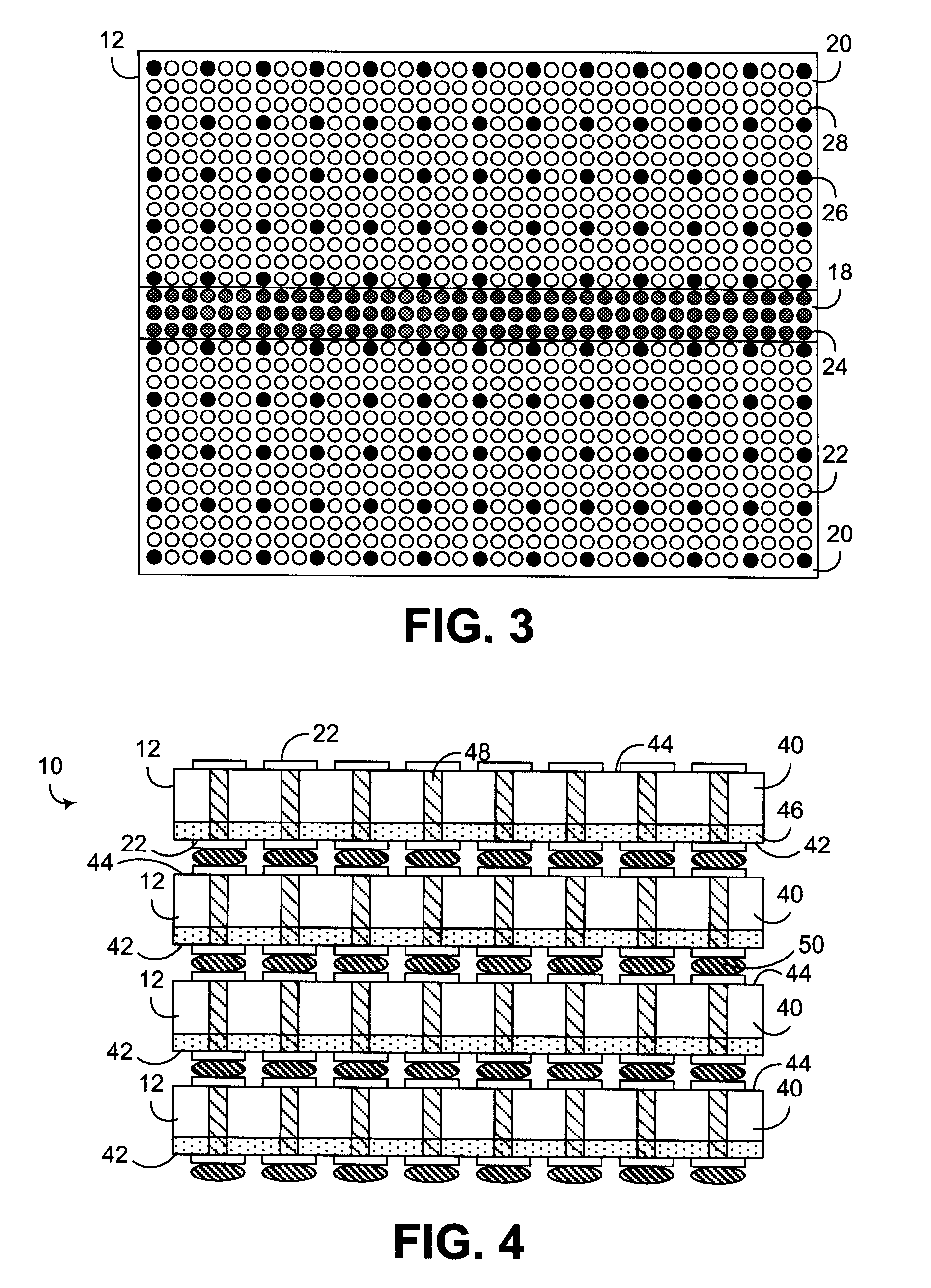Thermal enhancement for multi-layer semiconductor stacks
a multi-layer semiconductor and stack technology, applied in the direction of individual semiconductor device testing, semiconductor/solid-state device testing/measurement, instruments, etc., can solve the problems of increasing the cost of manufactured chips, reducing the yield of the manufacturing process, and data between the various functional units of the semiconductor chip can become a bottleneck on overall performance, etc., to achieve the effect of increasing the thermal conductivity of the multi-layer semiconductor stack and increasing the thermal conductivity
- Summary
- Abstract
- Description
- Claims
- Application Information
AI Technical Summary
Benefits of technology
Problems solved by technology
Method used
Image
Examples
Embodiment Construction
[0034]Embodiments consistent with the invention may incorporate techniques consistent with the invention to enhance the thermal characteristics of a multi-layer semiconductor stack. One technique that may be employed utilizes thermal-only through vias (hereinafter referred to as “thermal vias”) to improve the thermal conductivity of a multi-layer semiconductor stack. Another technique, which may be used in connection with or in lieu of thermal vias, sequences or arranges semiconductor dies, and the circuit layers disposed thereon, in a stack so as to minimize power distribution losses in the stack.
[0035]Prior to discussing the aforementioned thermal enhancement techniques, however, an overview of one implementation of a multi-layer semiconductor stack and the design thereof, suitable for use in connection with such thermal enhancement techniques, is provided.
[0036]Multi-Layer Semiconductor Stack with Inter-Layer Bus
[0037]Embodiments of the invention may be utilized in connection wit...
PUM
 Login to View More
Login to View More Abstract
Description
Claims
Application Information
 Login to View More
Login to View More - R&D
- Intellectual Property
- Life Sciences
- Materials
- Tech Scout
- Unparalleled Data Quality
- Higher Quality Content
- 60% Fewer Hallucinations
Browse by: Latest US Patents, China's latest patents, Technical Efficacy Thesaurus, Application Domain, Technology Topic, Popular Technical Reports.
© 2025 PatSnap. All rights reserved.Legal|Privacy policy|Modern Slavery Act Transparency Statement|Sitemap|About US| Contact US: help@patsnap.com



